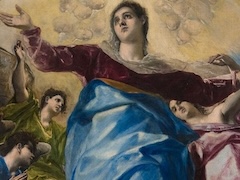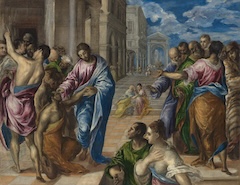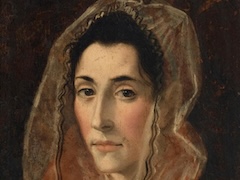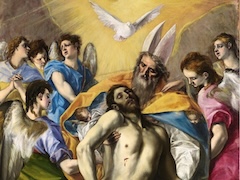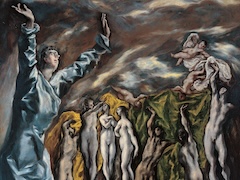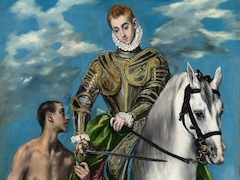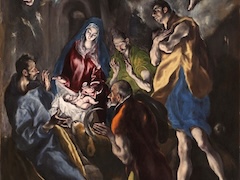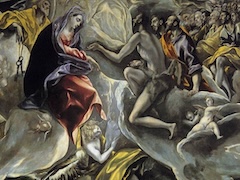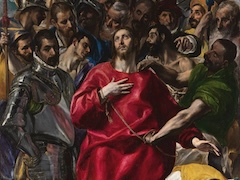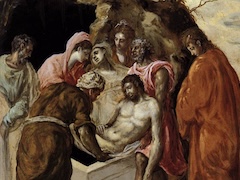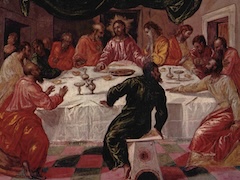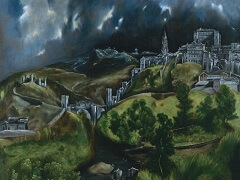A Lady in a Fur Wrap, 1577-80 by El Greco
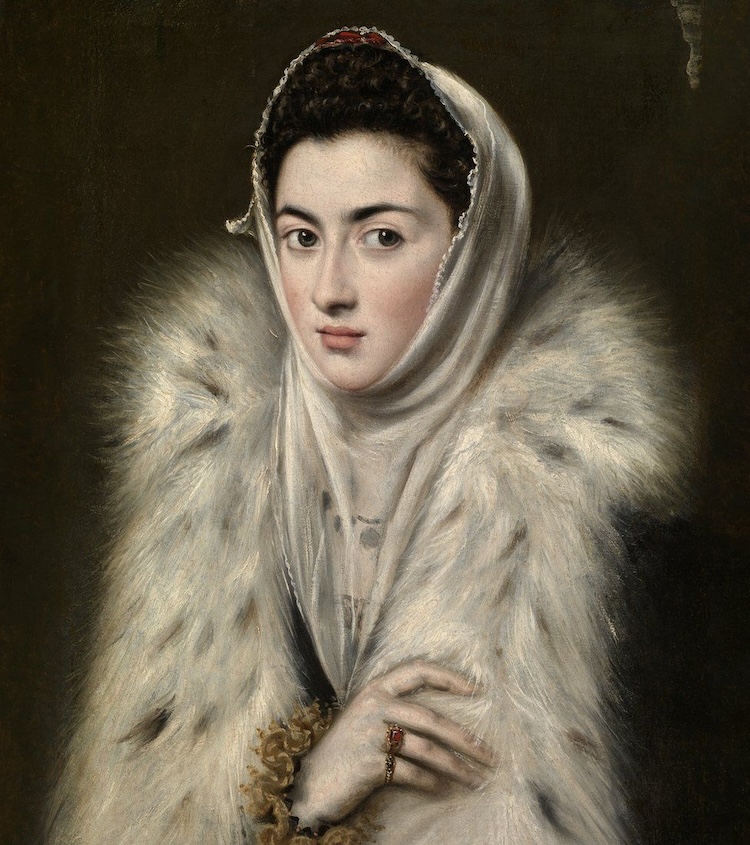
This is probably the earliest extant portrait which El Greco painted in Toledo. The treatment, with the greater continuity of brushstroke, is related to that of his portrait of Vincenzo Anastagi of his last years in Italy, and to his first paintings in Spain. In the manner of Titian, the lynx fur is freely and vigorously painted.
The dark tafts have been cleverly arranged so that they seem to splay out from the sitter, thereby enhancing and vivifying her. The identity of the sitter is not known, but clearly the portrait is too informal and intimate for a sitter of royal or aristocratic blood. The fact that El Greco painted very few female portraits, the intimate quality of the portrait, the apparent age of the sitter, and the correspondence in time with the setting up of the household, lead some critics to the conclusion that this is a portrait of Jeronima de las Cuevas, his life-long companion in Spain, and the mother of his son, Jorge Manuel. Since evidence for Jeronima's appearance is completely lacking there have been more reasoned proposals on the basis of comparison with other portraits. However, these identifications present problems of their own.
Regarding the authorship of the painting, several other attributions have been put forward. It has been proposed as a work of Tintoretto, of an artist in the circle of the court painter Alonso Sanchez Coello, and most recently, of the Cremonese portrait painter Sofonisba Anguissola. None of these is any more convincing, however, than the traditional attribution.
Paul Cezanne's copy of the painting (1879-80; Pellerin collection, Paris) heralded the ultimate recognition of the artist.


